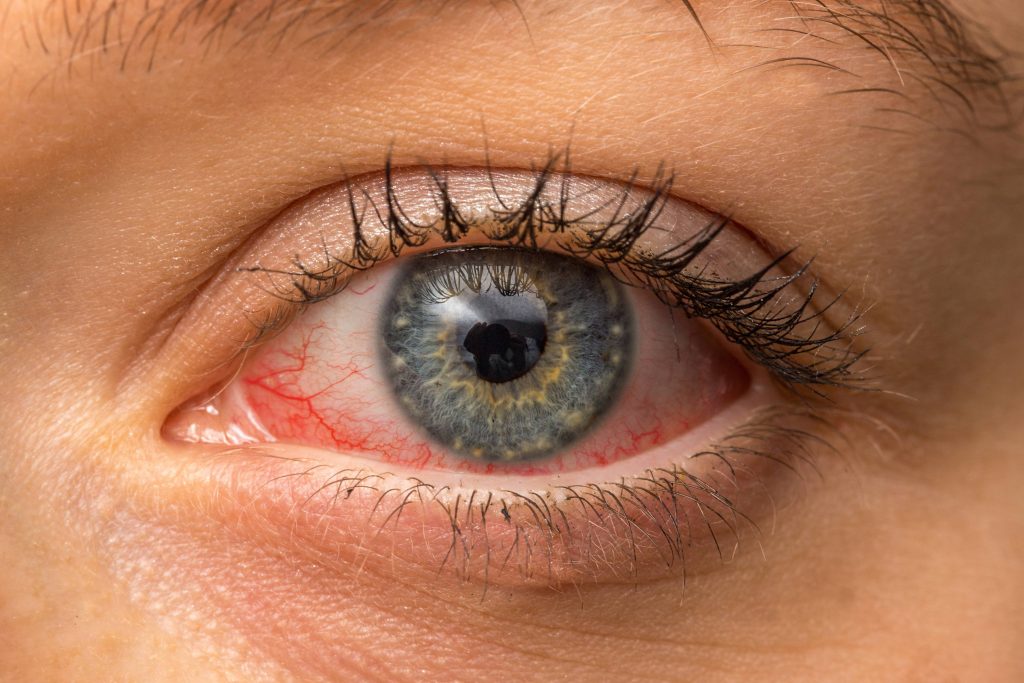How to Treat Pink Eye
Pink eye is a common, and usually distressing, condition that can make your eyes feel absolutely dreadful. Medically known as conjunctivitis, this condition can first become noticeable with redness and swelling around the whites of your eyes. Burning, itching and watering will usually quickly follow these first signs if you have pink eye.
Pink eye is associated most often with children, though adults can get it, too. Across all ages, this condition is as easily treatable as it is easy to spread. Knowing the symptoms, treatments, and prevention tactics can assist in keeping this problem to a minimum as you go about your daily life. So, to help you out, here’s what you need to know.
Symptoms of Pink Eye
Conjunctivitis has many causes, ranging from allergies and irritants to viruses and bacteria. With so many different things potentially triggering this condition, it makes sense that symptoms can vary, too.
There are many shared symptoms of pink eye, however, such as:
- Redness and swelling in the whites of the eyes
- Swollen inner eyelids
- Excessive tearing up
- Itching
- Burning
- Feeling like something is in your eye
- White, green, or yellow discharge
You might also notice sensitivity to bright light, making it difficult to open your eyes fully in the daytime hours.
Due to the swelling and discharge, contact lenses wearers may notice a poor fit and immense discomfort. Switching to glasses until the condition clears up is a good idea. With that switch, you give your eyes a chance to heal and prevent the spread of this condition when caused by viruses and bacteria.
Keep it From Spreading
Pink eye caused by allergens and irritants cannot be spread from person to person. When the condition arises due to viruses or bacteria, however, that is no longer true. With those biological agents running the show, conjunctivitis becomes highly contagious.
Without knowing what you are up against, it is best to assume you have the contagious variety and act accordingly. You can prevent its spread by:
- Keeping your fingers out of your eyes
- Avoid touching the eye area in any way
- Declining to share eye makeup
- Only using your own contact care products
- Never sharing eyeglasses, even for a moment
You should also practice good hand washing techniques, as this keeps the germs traveling down the drain where they belong. Always scrub with soap and hot water for at least 20 seconds each time. Lather up between your fingers and along your entire hands, even scrubbing up your arms a bit if you may have rubbed your eyes with your wrists.
When to Seek Medical Care
Not all cases of conjunctivitis require a trip to a nurse or doctor – although it is almost never a bad idea. Conditions that do require prompt diagnosis and treatment include:
- When pain levels continue to worsen and become unbearable
- If sensitivity to light makes it difficult to go about your day
- When swelling and redness increases in severity
People with a weakened immune system, such as those going through cancer treatment, should always visit their health provider when possibly infected by a virus or bacteria. This is also true if you have a pre-existing condition that may increase the risk of complications. Similarly, newborns and infants should get prompt care whenever pink eye arises.
Although treatment is not always needed, medical professionals can assess the severity of the condition and help reduce its symptoms. Dr. Gregory Blomquist, Chief Medical Officer at Community Med urgent care clinic in Haslet, Texas, advises: “With any condition, it always pays to get diagnosis and treatment as quickly as possible.”
If you suspect your child may have pink eye, it’s generally wisest to seek diagnosis and treatment by a medical professional.
Follow the Care Plan
Diagnosis enables a treatment plan, which the suffering patient should follow diligently for the best recovery. For minor cases of pink eye, a cold compress several times a day may be all that’s prescribed to relieve the swelling and discomfort.
Your treatment may include artificial tears – lubricating eye drops – to keep your eye well lubricated and help flush out any contaminants as it heals. This is usually the treatment plan followed for pink eye caused by allergies, irritants, and viruses. Allergy sufferers may also receive medication for their allergies plus prescription eye drops to fully resolve their discomfort.
When caused by certain types of bacteria, however, treatment may have to go one step further and include an antibiotic medication. The antibiotics only work to kill bacteria, not viruses, and only if the full course is taken as directed. Depending on the severity of the infection, you may notice a decrease in symptoms within a couple days.
You should always finish the antibiotics in any treatment unless otherwise directed, as this helps kill all remaining bacteria and prevent the problem’s return.
In most cases of pink eye, you can expect to make a full recovery in one to two weeks.





These are great tips for anyone with Pink Eye and I know my Father In Law recently had pink eye but I ahve never had it thank goodness. Eye health is so very important and aoopreciate you helpful tips!
I work in a school and pink eye is definitely common for younger kids. It is good to know how it works and what the best way to treat it is.
It’s always a good idea to consult a medical professional when dealing with pink eye to ensure proper treatment and prevent any complications. Prevention is key, and taking simple steps like washing hands regularly can go a long way in avoiding contracting this common infection.
My daughter has had pink eye/conjunctivitis a couple of times. These are great tips to bookmark for future reference!
pink eye tends to get so painful and uncomfortable. thanks for these tips on treatment and totally agree about always finishing up the antibiotic treatments to the end
With spring coming up, my daughter has been getting pink eye quite a lot. Thanks for the share, these tips really help out.
I used to get pink eye quite a bit bc of my allergies. One year, they gave me a steroid shot to help clear it up. Plus, eye drops.
I’ve never had pink eye before, but I know many who have. I hear it is no fun at all. I always worry about this too.
Pink eye is no fun to experience. This is good info that I need to share with my daughter.
These are great tips. I used to work with children and was always worried I would get pink eye.
Oh man, I once had DOUBLE pink eye, and my husband was deployed, so that was not fun at all. I had to go to the ER and get special drops.